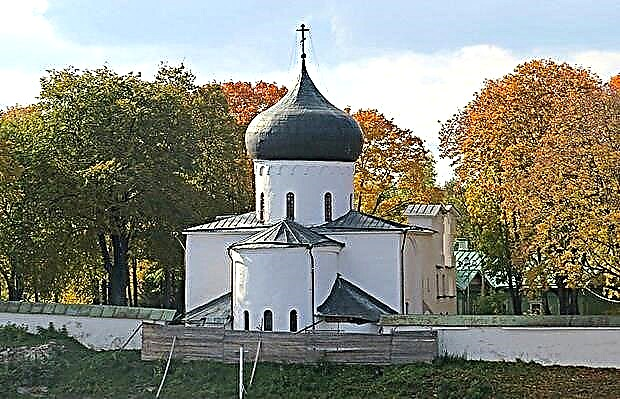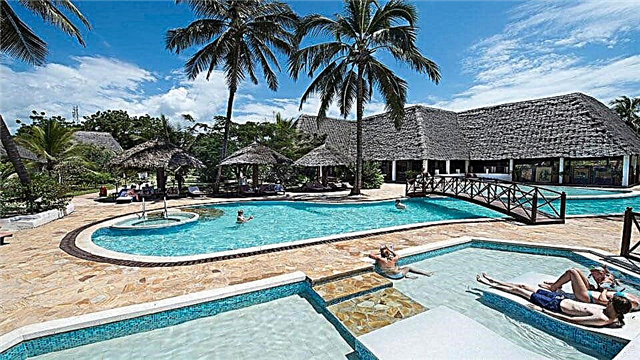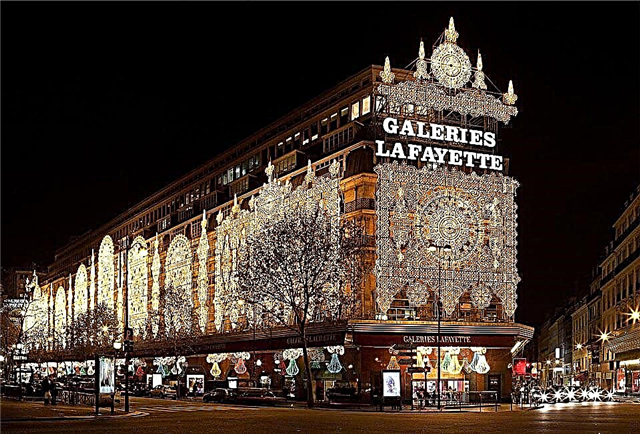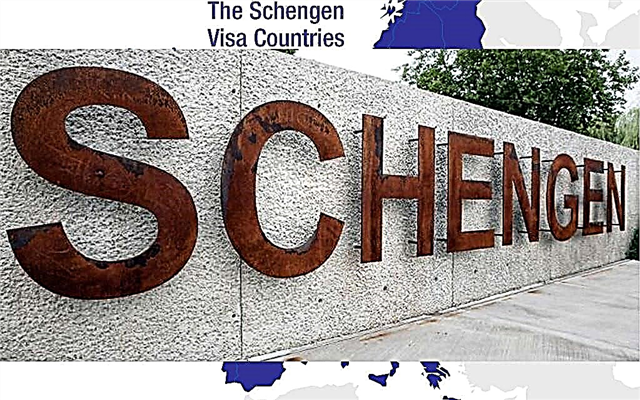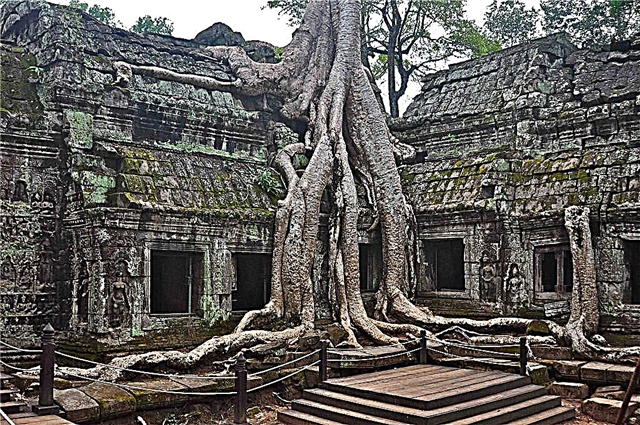Is it very difficult to surprise you? Have you visited all corners of the planet and think that you have seen everything? Then I propose to dispel your skepticism with another tour, which includes a visit to one of the most striking monuments of the ancient Khmer religion. Today we go to the distant Southeast Asia, in the jungle of which no less secrets and artifacts are hidden than in South America with its famous Mayan and Inca settlements. The ultimate goal of our tourist trip is the majestic Angkor Wat temple, which has a history of approximately 900 years.

Temple in the Jungle: Historical Excursion
According to official sources, the construction of the temple began in the 12th century. It is believed that Angkor Wat was part of the once huge Khmer Empire, around which there are many disputes even today.
Angkor is the name of a city that was considered the center of the empire. Its size is amazing. Initially, it was believed that the city occupied an area of 200 square kilometers, but now this figure has increased tenfold. Scientists say that at the very dawn of the empire, at least 500 thousand Khmers lived here. The temple complex itself was dedicated to the god Vishnu and was considered the most prominent representative of the Hindu religion. It is the architecture of the buildings that reminds of the religion that has been preached on this territory for many centuries.

The construction was completed during the reign of King Suryavarman II. It was during this period that Ankor experienced the peak of its formation, was a metropolis and had a population of several hundred inhabitants. In total, huge areas with villages and other settlements, in which at least 80 thousand peasants lived, were attributed to the temple. A little later, Ankor Wat became not only a center for worshiping Vishnu, but also Buddha.
Already in those distant years, the temple amazed the imagination with its majesty. Huge ditches (about 200 m) filled with water were dug along its entire perimeter. The height of the main tower of the temple is a record 42 meters for that time, and the highest point is 65 meters above the ground.

All the most interesting information and an overview of Cambodia's most stunning attractions in our travel guide.
Location of the religious center
A unique building of its kind, which amazes with ingenious architecture, size and rich decoration, is located just 5 km north of the city of Siem Reap. It is interesting that almost no one remembered such a structure for several centuries in a row, starting from the 15th century. This led to the fact that the temple fell into a kind of decay. The jungle reliably hid the grandiose structure from prying eyes, and the huge roots of tropical trees caused irreparable damage to the religious complex, which for many years successfully combined the center of two religions - Hinduism and Buddhism.

It is worth paying tribute to local activists and authorities, who caught themselves in time and began to ennoble the territory of the majestic temple. And today we all have a unique opportunity to enjoy the monumental structure to the fullest, take rare pictures and mark with a red pencil one more place on the map, which is worth visiting more than once.
A program of large-scale restoration of a huge complex has been launched, the search for funds for which is being carried out by the world organization of UNESCO. The scale of the temple and the amount of work required requires serious investments in the restoration of the temple. Since 1992, the temple complex has been included in the list of cultural heritage sites and is under protection. Despite this, the years have caused irreparable damage to the structure, which was based on brittle sandstone. Therefore, if you want to see the grandiose structure of the 12th century with your own eyes, you should not postpone the question of ordering a ticket on the back burner. Hurry up to see the temple with your own eyes and touch the ancient history with your hands!

There is a version that the famous writer Rudyard Kipling came up with the idea of writing the work "The Jungle Book" just after visiting this grandiose complex of structures. Who knows, maybe a muse or inspiration will visit you to create some kind of masterpiece ...
What makes it unique?
As mentioned earlier, the temple has an impressive size and rich architecture, even some elements of which cannot be called superfluous. In addition, the uniqueness of the structure is due to the rare combination of two religions at once, which peacefully coexisted within the walls of the temple. You will not find this anywhere else.

But there is one more peculiarity. Despite its size and importance to the Khmer Empire, the temple was not open to everyone. Only a select few - representatives of the nobility and kings - could get behind its walls to perform a prayer service. Here the souls of the deceased rulers found their last refuge, and their bodies forever occupied the allotted places in the tomb. This is due to one peculiarity of the local religion of that time. The Khmers believed that gods lived in the temple, therefore, only selected representatives of the spiritual and secular nobility could communicate with them and see them. Here, every detail has its own meaning and plays a role. Three huge towers are shaped like lotus buds, and their design is complemented by special sculptures and a unique bas-relief.

The total area of the temple complex, which has the shape of a rectangle, is nearly 200 hectares! And all the buildings, without exception, were erected in an original way - from top to bottom. Archaeologists and scientists have not seen such technology anywhere on the planet.
It is believed that the appearance and structure of the complex ultimately had to match the legendary sacred mountain Mere. The buildings seem to repeat all its outlines: the towers are its peak, the outer walls are rocky ledges, and the moat at the foot is the ocean that surrounds the Universe.

The Khmers spared no effort or jewelry to create a unique temple complex. Initially, Angkor Wat was the most impressive religious center of the Khmers in terms of its rich content. But as a result of the civil war, the invasion of atheists, more commonly known as the Khmer Rouge and Pol Pot's soldiers in the 1970s, most of the jewelry and artifacts were looted, and the complex itself suffered irreparable damage. The temple was protected from the invasion of vandals only in 1992, when UNESCO control was established over it.

Guided tour of the ancient temple
Today, tourist excursions around the temple complex are available to almost everyone. The main requirement is to follow the simple rules of staying in the temple and respect this cultural and architectural monument.
Angkor Wat will give some of the most vivid impressions to everyone who happens to be in Cambodia. Exotic adventures, history steeped in oriental culture and amazing religion - this is just a small part of what you will get to know outside its walls.

You also need to know that the complex of buildings includes several dozen temples and individual buildings, and the entire irrigation system, which is 900 years old, is still working properly and performing its functions. Particularly noteworthy are the temple mountain, which has the name Bayon, images of the main god Buddha, carved from stone, the Elephant Terrace and the statue of the Leper King. Of course, it is impossible to describe in words the grandiose creation of human hands. Each building is made in a special style and has its own characteristics. Let's dwell on some of the sights in more detail.
Phnom-Bakheng is considered one of the earliest buildings of Angkor.It is believed to have been erected in the ninth century and eventually took on the appearance of a structure with five tiers and several towers. The central area of the complex is called Angkor Thom, which literally means “big city”. Along the entire perimeter, it is surrounded by a water channel and walls (100 m and 8 m, respectively). The citadel includes five gates, which are surrounded by high towers, the walls of which are decorated with images of deities.

Behind the walls of the citadel is the Bayon pyramid, which was already mentioned above. It is surrounded by 54 towers. There are also such attractions as the Bafuon Temple (more precisely, its ruins, which have survived to this day), the palace, the Baphuop and Pimeanakas sanctuaries (which is better known as the "Palace of Heaven"), the Elephant Terrace (from which the rulers watched the progress of all ceremonies). Here you can also enjoy the original features of the Victory Gate and stone bridges decorated with the faces of the gods.
If the buildings mentioned above, for the most part, have undergone partial or complete restoration, then some of the temples have retained their original appearance. For example, Ta-Prom.

How to get there and where to stay
You can get to the temple complex from Phnom Penh (240 km) or from Siem Reap (6 km). It is Siem Reap that is most popular among tourists, since the tourism business has been actively developing here recently. For the convenience of visiting Angkor Wat, which is visited by hundreds of thousands of tourists every year, an international airport has been built here, and a lot of modern hotels will provide convenience for visitors without any problems. Getting to the temple complex from here is quite easy. This is what caused such popularity among tourists.
Recommendations
If you are going on a tourist visit to Cambodia for the first time, it is better to use the services of a guide. Even today, the country is littered with mines and other life-threatening reminders of the Khmer Rouge invasion. Therefore, it is easiest to get to the temple safely and get those impressions for which you came here as part of a tourist group led by an experienced guide.
But if you have been here before, you can refuse the services of a guide. This will give you a significant advantage over other tourists who absent-mindedly wander the walls of the buildings, following on the heels of the guide who follows the usual central route. In this case, you will not be able to appreciate all the greatness of architecture and look into the far corners of Angok Wat.
But the most interesting thing begins only when you turn off the central route and lay your own among the towers and temples, statues of Buddha and sculptures of other gods. Such a walk will bring many amazing discoveries and memorable photographs. For real enjoyment, do not forget to think in advance about the form of clothing and especially carefully choose your footwear for walking.
The most beautiful temple complex is at sunrise and sunset. An early morning visit will save you from the crowds of tourist groups, of which there are a huge number. The temple loves silence. And it is during these morning hours that I am ready to reveal my secrets to true connoisseurs and experts of Eastern religion. We wish you a successful journey to the origins of Hinduism and Buddhism and vivid impressions!


